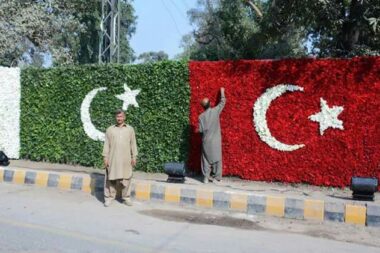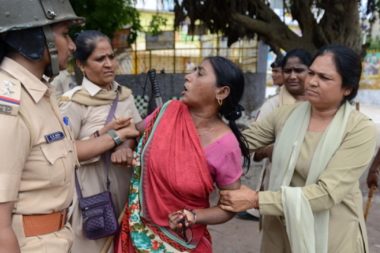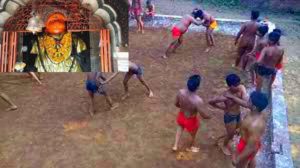 The age-old intention of carving a chiseled exterior, enhancing internal endurance and building an unflinching stamina was to stay put in the battling climate of difficulties and encounter the slams of invading enemies with absolute strength, vigor and courage. So, the actual purpose of establishment of Gymnasiums goes much beyond sculpting an alluring physique and carving packed dents on a flat abdomen. But the primitive function of Gymnasiums got adulterated over time and became limited to enhancing personal health and beauty. It would be certainly eye-opening to know about the glorious past of modern-day Gyms, our havens of body building, which actually began with strong political and social perspectives
The age-old intention of carving a chiseled exterior, enhancing internal endurance and building an unflinching stamina was to stay put in the battling climate of difficulties and encounter the slams of invading enemies with absolute strength, vigor and courage. So, the actual purpose of establishment of Gymnasiums goes much beyond sculpting an alluring physique and carving packed dents on a flat abdomen. But the primitive function of Gymnasiums got adulterated over time and became limited to enhancing personal health and beauty. It would be certainly eye-opening to know about the glorious past of modern-day Gyms, our havens of body building, which actually began with strong political and social perspectives
The Ancient Origins of Gymnasiums: A Time Travel 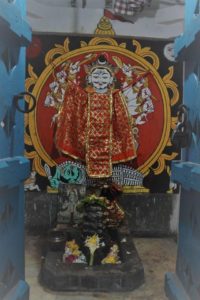
Contemporary Gymnasiums which are treated almost like secondary residences and worshipped as holy habitats by you, me and everyone around, could be said to have sprung out from a very inconspicuous yet stolid institution called the Jaga Gharas of Puri, a petite city in the Eastern Coast of India. The establishment of Jaga Gharas(Work Houses) dates back to times as primitive as the 12th century Puri, a religious city in India known internationally for Lord Jagannath, the Lord of the Universe who is believed to be the indomitable force of ultimate truth and knowledge. The Jagannath Temple, owing to its richness of culture, was perpetually under the periscope of foreign invaders. The temple was in acute need of protection since it did not have sturdy borders to surround its sprawling space that could keep the greedy eyes of invaders at bay. Thus, came the Jaga Gharas into existence.
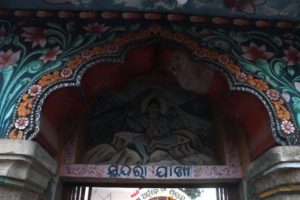 The Jaga Gharas were constructed in and around the Jagannath Temple with the primary purpose of imparting skills of martial arts to the youths of Puri, so that they could safeguard the then vulnerable Temple and dutifully protect it from the claws of foreign scavengers. Fundamentally, the Jaga Gharas functioned as professional training centres that imparted a plethora of war techniques to the locals of Puri. But the preliminary process of a robust training program began with a preparatory phase of body building activities that was elaborate and multifaceted. Doing numerous push-ups, sit-ups, planks, crunches that taught working against external friction; hitting the floor with complex sets of squats, bench-presses, dead-lifts that augmented inherent resilience; working on biceps with hammer curls, cable curls that built muscle mass and improved endurance against tension and gravity; learning swimming, wrestling, acrobatics that facilitated general flexibility and agility ensured that the trainees were groomed enough to fight uninformed battles and are capable to put an indefatigable stance against belligerent enemies.
The Jaga Gharas were constructed in and around the Jagannath Temple with the primary purpose of imparting skills of martial arts to the youths of Puri, so that they could safeguard the then vulnerable Temple and dutifully protect it from the claws of foreign scavengers. Fundamentally, the Jaga Gharas functioned as professional training centres that imparted a plethora of war techniques to the locals of Puri. But the preliminary process of a robust training program began with a preparatory phase of body building activities that was elaborate and multifaceted. Doing numerous push-ups, sit-ups, planks, crunches that taught working against external friction; hitting the floor with complex sets of squats, bench-presses, dead-lifts that augmented inherent resilience; working on biceps with hammer curls, cable curls that built muscle mass and improved endurance against tension and gravity; learning swimming, wrestling, acrobatics that facilitated general flexibility and agility ensured that the trainees were groomed enough to fight uninformed battles and are capable to put an indefatigable stance against belligerent enemies.
 A routine bodybuilding workout not only provided an athletic physique to the young bunch of Puri, but also harnessed their hot adrenaline thereby enhancing their vitality and fortitude. No doubt, a strong body is house to a strong mind and in sculpting and strengthening the former the Jaga Gharas built a solid mind that could slip into the skin of a soldier even at the tiniest sign of danger. Thus, the Jaga Gharas were the force that introduced an organized scheme of bodybuilding and in doing so they could be addressed as the worthy precursors of modern-day gymnasiums.
A routine bodybuilding workout not only provided an athletic physique to the young bunch of Puri, but also harnessed their hot adrenaline thereby enhancing their vitality and fortitude. No doubt, a strong body is house to a strong mind and in sculpting and strengthening the former the Jaga Gharas built a solid mind that could slip into the skin of a soldier even at the tiniest sign of danger. Thus, the Jaga Gharas were the force that introduced an organized scheme of bodybuilding and in doing so they could be addressed as the worthy precursors of modern-day gymnasiums.
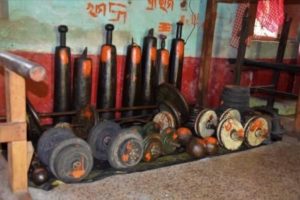 However, the Jaga Gharas’ intention of safeguarding the susceptible and sensitive Jagannath temple gradually got thinner with time. The meghanada pacheri, a twenty feet tall huge concentric wall was built all around the Temple to shield it from all sorts of gluttonous gaze and operate as a permanent physical protection. Although the apprehensions of ensuing attacks were put to rest yet the love for fitness and building an alluring body that was instilled into the psyches of the youth remained intact. The Jaga Gharas gradually evolved into local gymnasiums called “culture” with conventional equipment like mace, marble mortars, cylindrical weights made up of rocks, heavyweight circular dishes, sticks, ropes, benches etc. as their workout essentials. They also taught a range of freehand exercises that developed the overall flexibility of the bodies without getting dependent upon expensive props. Thus, according to popular research, the Jaga Gharas, that propelled the youth to mould a healthy body and work in a dedicated fashion to stay fit, could be rightfully addressed as predecessors of the new age gymnasiums. Although the gymnasiums are more equipment-oriented and device-dependant, yet they share their fundamental purpose of physical fitness with the ancient Jaga Gharas and therefore bear an archaic South Asian origin.
However, the Jaga Gharas’ intention of safeguarding the susceptible and sensitive Jagannath temple gradually got thinner with time. The meghanada pacheri, a twenty feet tall huge concentric wall was built all around the Temple to shield it from all sorts of gluttonous gaze and operate as a permanent physical protection. Although the apprehensions of ensuing attacks were put to rest yet the love for fitness and building an alluring body that was instilled into the psyches of the youth remained intact. The Jaga Gharas gradually evolved into local gymnasiums called “culture” with conventional equipment like mace, marble mortars, cylindrical weights made up of rocks, heavyweight circular dishes, sticks, ropes, benches etc. as their workout essentials. They also taught a range of freehand exercises that developed the overall flexibility of the bodies without getting dependent upon expensive props. Thus, according to popular research, the Jaga Gharas, that propelled the youth to mould a healthy body and work in a dedicated fashion to stay fit, could be rightfully addressed as predecessors of the new age gymnasiums. Although the gymnasiums are more equipment-oriented and device-dependant, yet they share their fundamental purpose of physical fitness with the ancient Jaga Gharas and therefore bear an archaic South Asian origin.
Jaga Ghara vis-à-vis The Gymnasium: Through the Lens of History
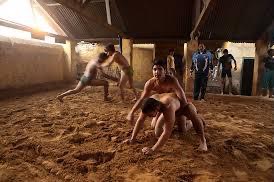 The Jaga Gharas apart from being abodes of bodybuilding were places where the male populace accumulated to interact, socialize and hold intellectual discussions. Every Jaga Ghara had a pond of its own where men went in naked to learn the nuances of diving and swimming. This was one of the ways of accepting the body in totality, being comfortable with it and treating it as an aesthetic entity meant to be preserved and worshipped. According to some traditional sources, “every Jaga Ghara had a presiding deity as the symbol of power and courage. Further, the Jaga Gharas were strictly meant for the boys and women were not allowed to enter.” (Sreekhetra.com)
The Jaga Gharas apart from being abodes of bodybuilding were places where the male populace accumulated to interact, socialize and hold intellectual discussions. Every Jaga Ghara had a pond of its own where men went in naked to learn the nuances of diving and swimming. This was one of the ways of accepting the body in totality, being comfortable with it and treating it as an aesthetic entity meant to be preserved and worshipped. According to some traditional sources, “every Jaga Ghara had a presiding deity as the symbol of power and courage. Further, the Jaga Gharas were strictly meant for the boys and women were not allowed to enter.” (Sreekhetra.com)
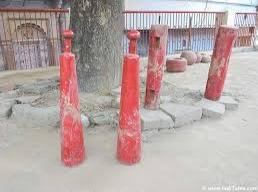 Going back to the history of contemporary Gymnasiums we, surprisingly, find very similar roots of origin and purpose. According to Wikipedia, the gymnasium “was a place for socializing and engaging in intellectual pursuits. The Greek word “Gymno” means naked. Earlier only adult males were allowed to use the gymnasia. The nude male body was considered a tribute to the Gods. Gymnasia and Palestrae were primarily wrestling schools…”. Another reliable online source also provides similar information about the origin and purpose of Gyms proclaiming that, “gyms formally came into existence in the 18th century Greece. They were a locality for the physical education of young men. Gyms were places where athletes were trained. After this, gyms disappeared and reappeared in the recent 19th century…once again with the aim to train fighters and boxers.” (indiatimes.com)
Going back to the history of contemporary Gymnasiums we, surprisingly, find very similar roots of origin and purpose. According to Wikipedia, the gymnasium “was a place for socializing and engaging in intellectual pursuits. The Greek word “Gymno” means naked. Earlier only adult males were allowed to use the gymnasia. The nude male body was considered a tribute to the Gods. Gymnasia and Palestrae were primarily wrestling schools…”. Another reliable online source also provides similar information about the origin and purpose of Gyms proclaiming that, “gyms formally came into existence in the 18th century Greece. They were a locality for the physical education of young men. Gyms were places where athletes were trained. After this, gyms disappeared and reappeared in the recent 19th century…once again with the aim to train fighters and boxers.” (indiatimes.com)
Moreover, few sources are of the opinion that Jaga Gharas had a tradition of massaging the athletes’ bodies with warm mustard oil to facilitate muscle repair and provide relaxation. This process of bringing about thorough rejuvenation in the bodies after the wear and tear of an intensive workout is collateral to the “essential oil massage therapies” provided at gymnasiums with an aim to soothe the post-workout fatigue. In addition to it, the trend of community workout adopted by the Jaga Gharas was also emulated by the Gymnasiums where people realized the effectiveness of exercising in groups and hence promoted group yoga, group Pilates and partner workout sessions.
No doubt, an analysis about the origin of Gymnasiums lands us at interesting junctures. Hardly anyone would be aware about the centuries old archaic Jaga Gharas of Puri, a vibrant and remarkable force of South Asian belt, for being an ardent precursor of the Gymnasiums of the modern times. This could be a humble acknowledgement of the time-honoured adage that “Old is Gold” and the seeds of every so-called novel concept that is flourishing with flying colours in the postmodern world are ingrained somewhere deep in the treasure troves of our very own magnificent past. An inquiring mind and an investigative approach are all we need to learn about the graph of social evolution. The results are always as amusing and thought-provoking as this small work of research.





